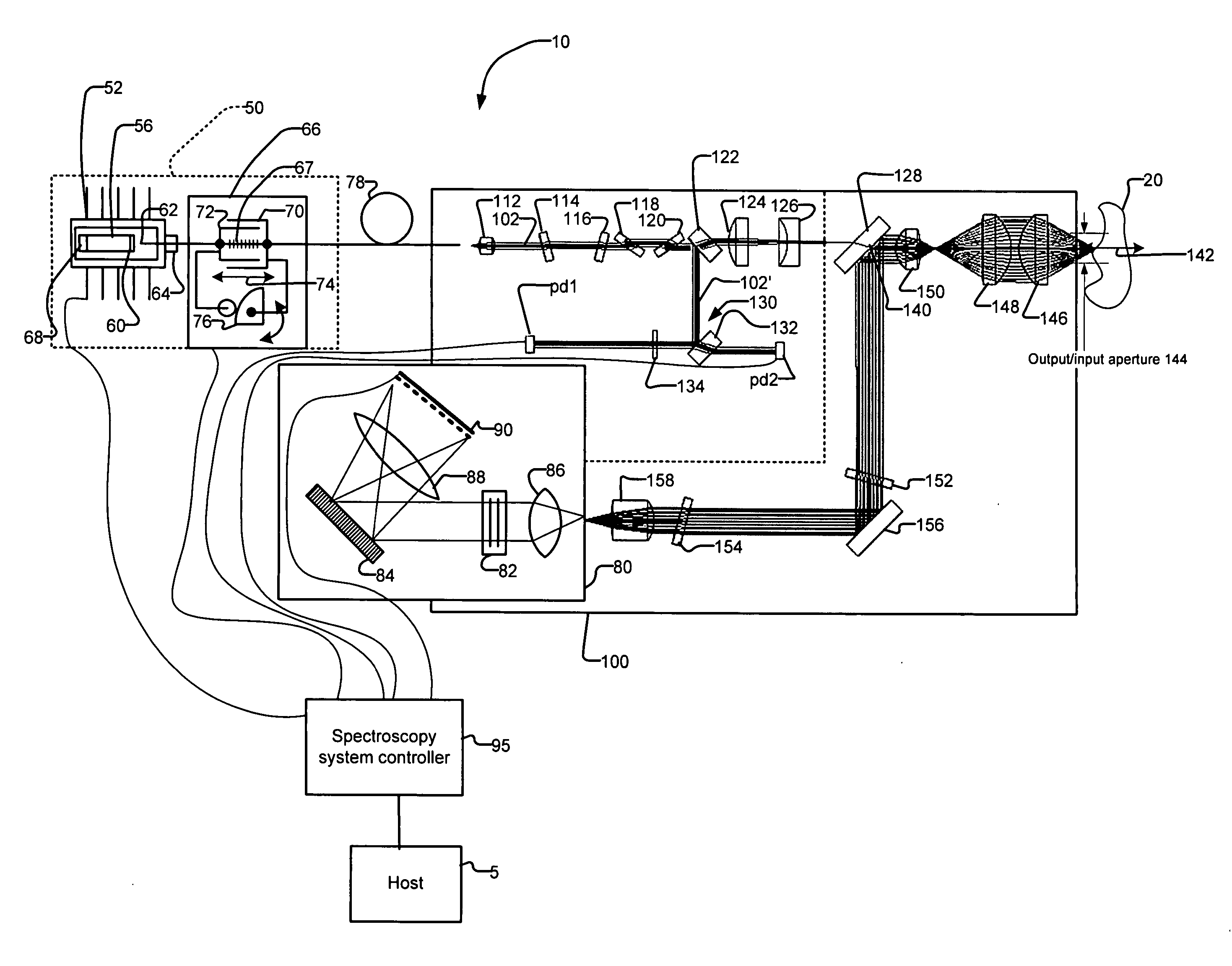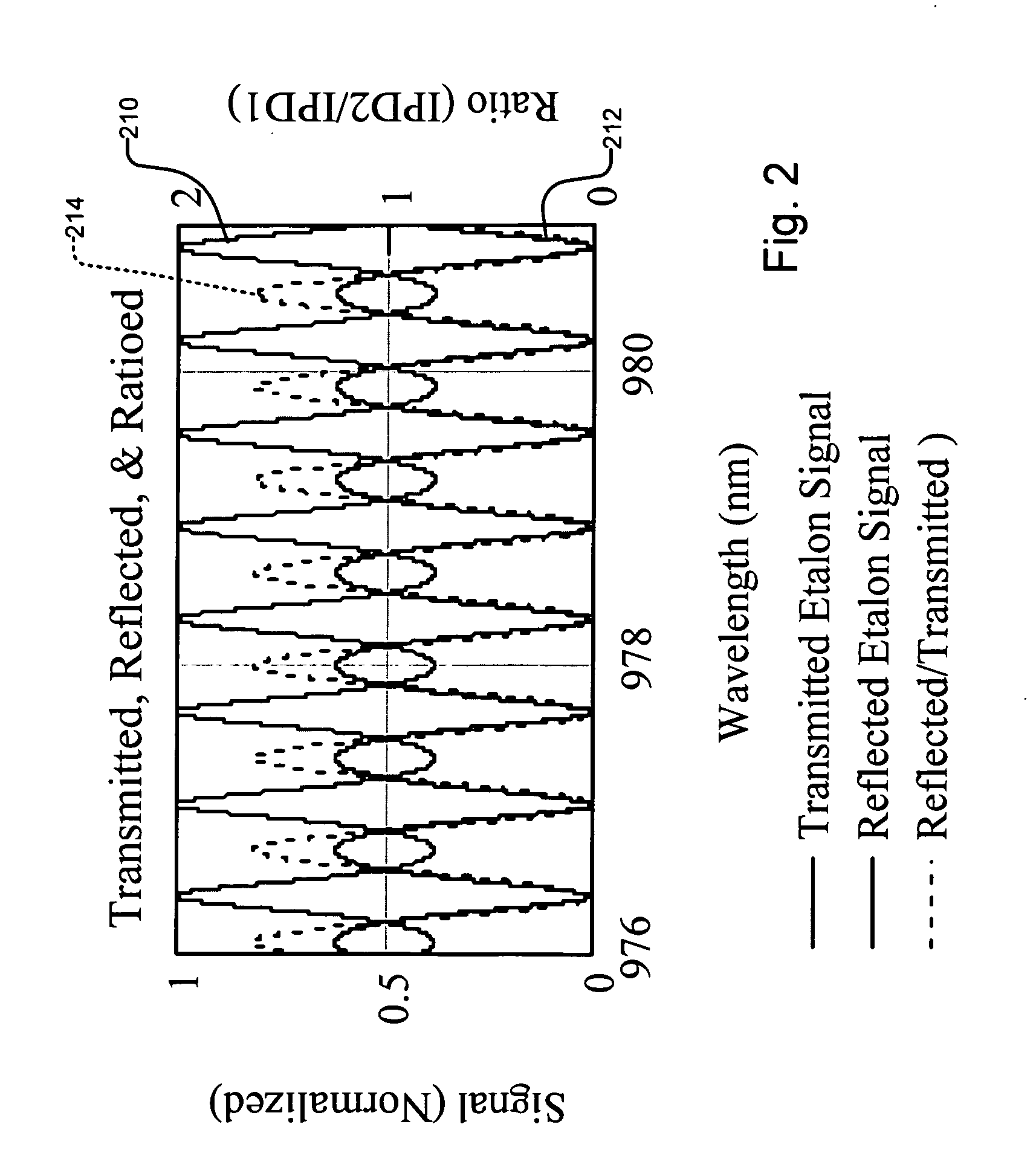Probe for tunable laser Raman spectroscopy system
- Summary
- Abstract
- Description
- Claims
- Application Information
AI Technical Summary
Benefits of technology
Problems solved by technology
Method used
Image
Examples
Embodiment Construction
[0023]FIG. 1 shows a Raman spectroscopy system 10, which has been constructed according to the principles of the present invention.
[0024] Specifically, it comprises a semiconductor tunable laser subsystem 50. The tunable laser subsystem 50 comprises a semiconductor diode module 52. In the illustrated example, this module 52 is a hermetic package such as a butterfly hermetic package. The diode laser module 52 holds a semiconductor gain element 56. In the present embodiment, this gain element 56 is a semiconductor optical amplifier, and specifically, a reflective semiconductor optical amplifier. These semiconductor reflective optical amplifiers 56 comprise a reflective back facet 68 and an antireflection coated (AR) coated front facet 60. They are useful in the construction of external cavity tunable semiconductor lasers.
[0025] In the illustrated embodiment, the external cavity tunable laser configuration provided by a wavelength tunable element module 66, which provides tunable nar...
PUM
 Login to View More
Login to View More Abstract
Description
Claims
Application Information
 Login to View More
Login to View More - R&D
- Intellectual Property
- Life Sciences
- Materials
- Tech Scout
- Unparalleled Data Quality
- Higher Quality Content
- 60% Fewer Hallucinations
Browse by: Latest US Patents, China's latest patents, Technical Efficacy Thesaurus, Application Domain, Technology Topic, Popular Technical Reports.
© 2025 PatSnap. All rights reserved.Legal|Privacy policy|Modern Slavery Act Transparency Statement|Sitemap|About US| Contact US: help@patsnap.com



